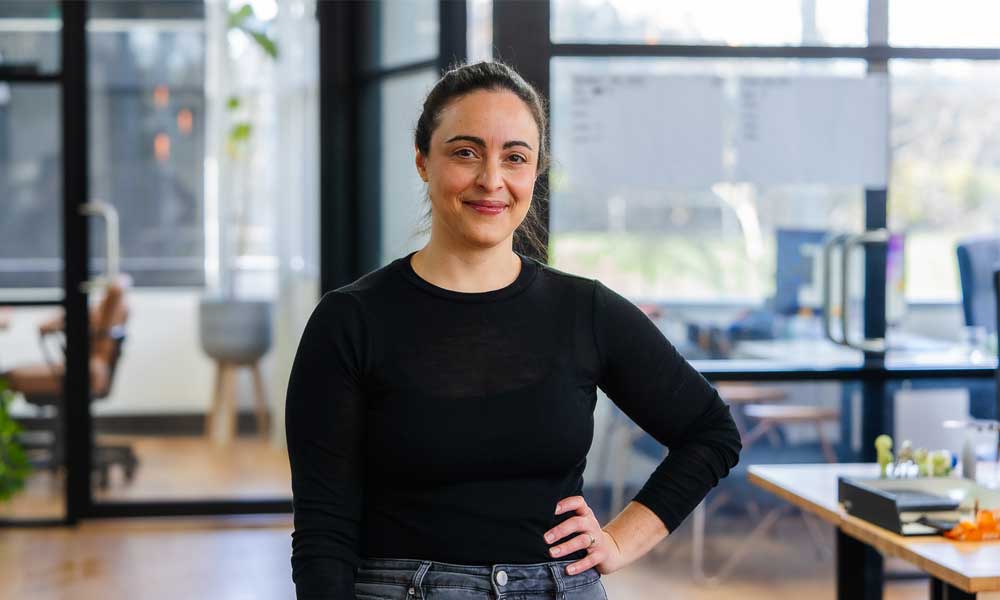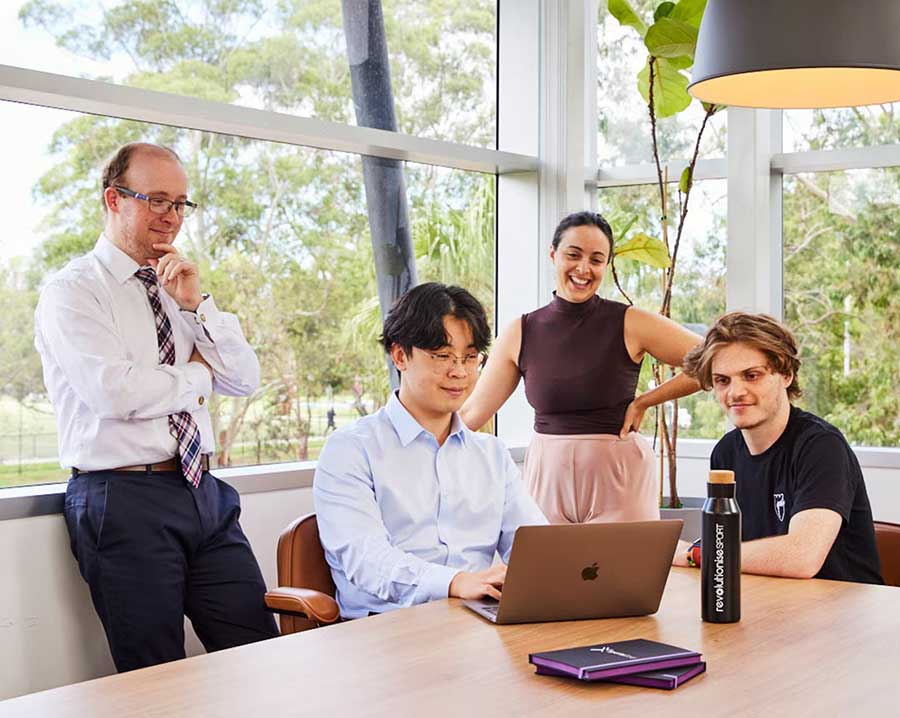Creating positive industry change through action

ASTN’s Women in Sports Innovation Report celebrates Australia’s leading women at the intersection of sports and technology that are shaping the future of sports innovation. Amy Crosland, Chief Operating Officer, ASTN speaks with Teresa Simonetti, discussing her career journey, the challenges along the way, and the importance of fostering diversity of thought in the sportstech industry.
In her role as Chief Engineer at SportsGrid, Teresa oversees the journey and development of SportsGrid's flagship platform, revolutioniseSPORT. Flourishing in the digital space, Teresa has over 10 years of experience as a Board Director, competition official, and media manager at both the association and club levels.
AC: Can you share a bit about your journey in the sportstech/innovation industry, and what inspired you to pursue a career in the sector?
TS: I actually envisioned an entirely different career path and started out training to become a medical doctor! Partway through my studies, I realised that it wasn't for me. I did go on to finish and graduate, but during that time I was increasingly becoming involved in my local water polo association. What began as a supportive role scoring matches quickly saw me evolve into a committee member, where I gained firsthand insight into the challenges facing community sport at the grassroots level. One significant issue was the absence of a suitable administrative platform to centralise and streamline all our functions (membership, competition management, etc.) online for all administrators, rather than everything being on the president's laptop.
Drawing on our experience in computing, my colleague at the time (Co-Founder Alex Mednis) and I set out to develop a platform flexible enough for any sport to adopt, but still with enough adaptability such that any sport (from water polo to basketball and gymnastics) could customise it to make it their own. From that, revolutioniseSPORT was born.
AC: What challenges have you faced within the sector, and how have you overcome them?
TS: I think for us (and especially for me as a woman in the industry) the biggest challenge in the beginning was being taken seriously. 13 years ago, the sporting landscape was very male, white, and middle-class. While the industry has shifted more recently, I believe our persistence and our mantra to never let a ‘no’ break us is one of the main reasons behind our success.
For myself in particular, a telling moment was a function where I was speaking to an industry influencer in conversation with Alex. They called someone over 'I want you to meet Alex from revolutioniseSPORT!' and the newcomer said hello to Alex and dutifully shook his hand. I stood there expecting the same treatment and, to my surprise, I was ignored entirely. So, I made a choice. I stuck my hand out and said 'Hi, I'm Teresa!'. It’s been eight years since that moment, but it has stuck with me as an indication that we still have a long way to go.
I'd say the 'breakthrough moment' when it felt like we'd 'made it' was at the 2017 National Sports Convention, when we won the Sport, Recreation and Play Industry Innovation Awards, in the Technological Solutions and Products category. I'd put a lot of work into that application and was chiefly responsible for it. Even sweeter was the iconic photo I took with the other category winners (all men, all white, and all middle-aged) holding my giant novelty check. I was definitely the odd one out (and the shortest by far!), but it didn't matter, because it was a validating moment and a clear indication that we were doing something right. We were here to stay.
AC: Is there a particular initiative/s or project/s that you have been involved in that has contributed to the growth of women's participation in the industry?
TS: For the longest time, I have pushed for a 50/50 gender split within our company. More recently this has extended to our company sponsoring the women in engineering societies at UNSW (WIESoc) and USYD (SUWIE), helping to encourage more women in STEM. We've also conducted engineering internship programs three years in a row, where we have encouraged young women to apply and provided successful candidates with training, mentoring, and support throughout their internship with us.
AC: From your perspective, why is it crucial to have greater representation of women?
TS: The worst situation you can be in is when you have a room full of people with the same faces, same names, all saying the same thing and agreeing with each other. That is the safety bubble, the 'poster boy' of stalled progress. Conversely, we know that we thrive much better in an environment of active discussion and healthy disagreement, where people from all walks of life can bring different perspectives to the table. In virtually every industry, it's demonstrated that key measures of an organisation's success – such as performance, profit, stability, and innovation – always improve when you introduce more women (or just more diversity in general) into its leadership ranks. Sportstech is no exception.
AC: What advice do you have for aspiring entrepreneurs looking to enter the sports innovation space?
TS: My first piece of advice is to know and understand your customers and their needs, first and foremost. Don't try to do too much in one go, as it will dilute your offering. Pick one thing, stick to it, and do it really, really, well.
Your idea also doesn't have to be particularly 'sexy' to be successful. Our offering of 'online sports management' certainly didn't sound particularly exciting compared to other things at the time like 'augmented reality glasses' or 'smart stadiums', but nevertheless it's something that there’s clearly a demand for. It comes back to understanding your customers' needs and developing solutions to the challenges they're facing.
For women, I think of the 'Peter principle' (men will typically be promoted up until their level of incompetence) vs the 'Paula principle' (women will typically work in roles below their level of competence). I encourage women to not be afraid to break out of that safety zone of competence, where you understand and know everything (I am guilty of this myself) and explore the unknown a lot more. I had to do that a lot in the beginning, and it still feels like I'm filling in a lot of the gaps now, but you will grow faster and be stronger for it.
AC: Looking ahead to the Brisbane 2032 Olympic and Paralympic Games, how do you envision the role of women in sports innovation evolving in Australia?
TS: I obviously hope that women continue to play a larger role in the sportstech industry, from entry level up to the executive/board level. I believe we are huge drivers of innovation because we bring a different perspective to the table.
To get there, we need to enforce quotas on boards at the executive level. I feel this is one of the most effective and clear ways to promote and encourage women's participation in sportstech. It's much easier to aspire towards an industry when it already has people who are similar to you in terms of gender, race, age, (dis)ability, etc.
And, starting much earlier, we need better encouragement of girls' participation in sports and technology from a younger age. It's known that girls' participation in sports drops off sharply from age 15 (double the rate seen in boys), and we need to work towards closing that gap. I know more is being done in that space now, I'm hoping we'll be in a much better position by the time 2032 rolls around!
It's tempting to think of 2032 as this giant cutoff, this big goal to reach, and then once we're there we can dust our hands. But the truth is, it's just a dot point (albeit a very large one) in a continuous line graph, and we can't lose focus and momentum once it's come and gone. Whatever strategies and policies we implement (at the government, societal, company level) they need to be sustainable in the ultra-long term.
To read the full interview series and to download the ‘ASTN Women in Sports Innovation’ Report visit HERE.
For more information on SportsGrid visit: www.sportsgrid.com.au
